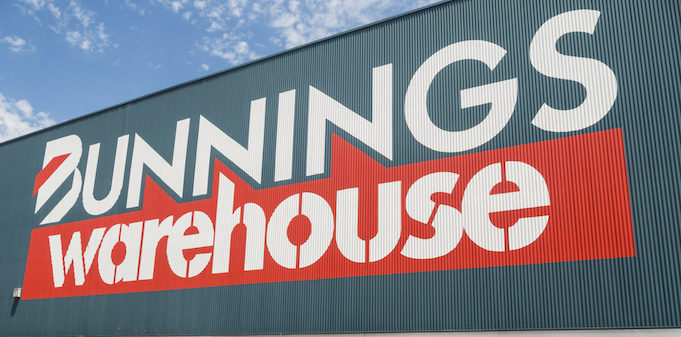
From robotic supermarkets to instant Amazon grocery deliveries, Australia’s biggest retailers are fighting it out for dominance at a time when retail experts say price might not be the only factor in future success.
When retail giant Wesfarmers reported its full year earnings yesterday, experts’ eyes were drawn to a 13.5% drop in earnings at supermarket giant Coles.
There are several moving parts within the Wesfarmers portfolio, and the group overall posted a 22% increase in net profit after tax, raking in $2.87 billion for the year. Bright spots included an increase in coal earnings and the performance of discount department stores, while Bunnings’ UK operations are off to a slower start.
Here are four things we learned from the retail giant’s earnings report.
Bunnings at home and away
Hardware monolith Bunnings banked $1.25 billion for Wesfarmers last year, but local stores have been providing better results than the recently launched UK stores.
Bunnings expanded into the UK market this year after acquiring the Homebase chain in 2016. The move piqued the interest of Australian shoppers, who got to watch British customers’ reaction to the humble sausage sizzle, but Wesfarmers reports the chain lost $89 million in its first year of operation.
Wesfarmers chief executive Richard Goyder said the first four UK Bunnings stores were resonating well with customers, but explained launching the brand overseas has been a challenging project.
“While significant transition, separation and integration activity was undertaken throughout the year to progress the acquisition agenda, the volume and pace of repositioning Homebase affected store execution and subsequently trading performance,” Goyder said.
Food and liquor news
At the end of June 2017, Australia had 801 Coles stores that had banked an overall $1.609 billion in revenue. However, this represents an earnings slide of 13.5% compared with last year, and as The Australian reports, the first time Coles has posted a revenue drop since 2007.
Earnings decreased despite an increase in sales for food and liquor across the network of two percent for the year, with Goyder saying the company remained focused on long-term growth in a “competitive environment”.
Wesfarmers reported “double digit sales growth” for its Coles Online offering, and said Liquorland had posted positive sales growth for the second consecutive year.
The discount department store competition
Mid-market department store retail is a challenging space in Australia, and while Kmart has powered ahead in the Wesfarmers stable, Target has had a tougher run.
This is changing, says Goyder, with Target’s chief executive Guy Russo able to stem the losses at the chain to $10 million over the past year, compared with $195 million the year prior.
Goyder says “good cost control and improved inventory management” are starting to pay off for the store.
Meanwhile, earnings at bargain-hunter favourite Kmart increased 18%, to $533 million. Kmart has long been credited by retail experts for pivoting towards customer’s needs for low cost homewares and basics, and Wesfarmers says “improvements in merchandising” contributed to the result.
Where Officeworks stands
Speculation was rife earlier this year over a possible float or spin-off of Officeworks stores, but there was no big reveal on any such ideas in its results.
The office supply chain contributed $144 million in earnings to Wesfarmers last year, an increase of 7.5%. The parent company credited the brand’s “every channel approach”, and six extra stores have been opened in the past year to bring the overall network to 164 sites.
Never miss a story: sign up to SmartCompany’s free daily newsletter and find our best stories on Twitter, Facebook, LinkedIn and Instagram.


COMMENTS
SmartCompany is committed to hosting lively discussions. Help us keep the conversation useful, interesting and welcoming. We aim to publish comments quickly in the interest of promoting robust conversation, but we’re a small team and we deploy filters to protect against legal risk. Occasionally your comment may be held up while it is being reviewed, but we’re working as fast as we can to keep the conversation rolling.
The SmartCompany comment section is members-only content. Please subscribe to leave a comment.
The SmartCompany comment section is members-only content. Please login to leave a comment.